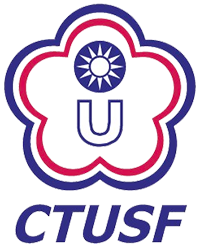Latest Articles
Author:Cheng-Chia Chen;Yi-Wen Kuo;Ya-Yun Cheng;Mei-Chich Hsu;Yu-Chuan Lin;William Chih-Wei Chang
Period/Date/Page:Vol. 27 No. 1 (2025/03) Pp. 89-102
DOI:10.5297/ser.202503_27(1).0006
Glucocorticoid Prescription Habit for Treating Athletes Among Physicians in Taiwan
Abstract:Glucocorticoids (GCs), known for their excellent anti-inflammatory effects and low cost, are widely used in clinical practice and the treatment of sports injuries. However, the misuse of these drugs may enhance athletic performance or lead to severe side effects, resulting in their classification as prohibited substances by the World Anti-Doping Agency (WADA). This study aims to explore the prescription habits of physicians from different specialties in Taiwan when treating athletes, as well as their level of understanding regarding the therapeutic use exemption (TUE) for GCs under the regulations of the WADA. Firstly, the study analyzed which medical specialties most frequently encounter athletes, the commonly prescribed categories of GCs, and the administration routes physicians use. Secondly, the study investigated Taiwan's commonly used GCs options and physicians' awareness of the TUE system, including application requirements and timelines. The study employed random sampling and distributed an online questionnaire to physicians across Taiwan (a total of 246 respondents with an average age of 48.6 ± 11.5 years). The majority of respondents were rehabilitation physicians (26.0%) and orthopedic physicians (19.5%), primarily treating second-tier athletes (45.5%). The results showed that most practicing physicians prescribe triamcinolone as the most commonly used GCs, with soft tissue injection being the most frequent route of administration, followed by oral administration of prednisolone. Significant differences were found in the prescription of injectable GCs across different specialties and years of practice. Regarding GCs and anti-doping regulations, there was a wide variation in awareness among respondents, with only about one-tenth of physicians correctly answering all related questions. This study provides insights into the prevalence and habits of GCs prescriptions by physicians treating athletes and highlights the knowledge gap regarding anti-doping regulations. The findings aim to promote the safety of medication use in the field of anti-doping and offer valuable reference data and directions for future education and training in anti-doping prevention. (Full text)




